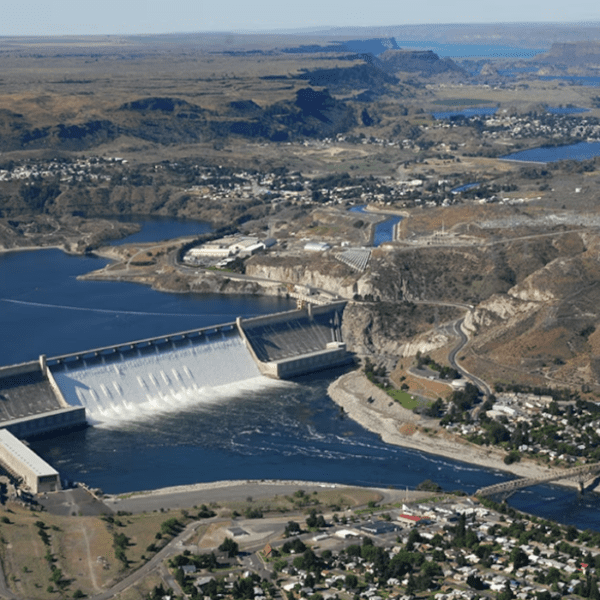Electricity market designers and policy makers are re-considering the traditional method of determining the adequacy of available electrical generation resources to meet electrical power demand. This is, in part, because of the increase in the number of variable and energy-limited resources in the generation portfolio.
Potential changes could have great impacts on hydropower and pumped storage. It’s important for the waterpower industry to get involved in these discussions to make sure methodologies accurately reflect the value of hydro and pumped storage.
THE DEEP DIVE
How do you assign a value for reliable generators?
In the past, this exercise was pretty simple: Utility planners would forecast their peak demand (usually a hot day in the summer), then add an additional amount called a reserve margin. Next, they would determine how many megawatts of generation they could rely on during that peak day by “de-rating” all of the facilities. They did this by reducing the amount of each generator to account for forced outages – essentially, the likelihood that the equipment would break or lower output from high ambient temperatures. This total amount of “unforced capacity” represented the amount a facility could be relied on during grid shortages and thus how much it would be paid in capacity markets or in bilateral resource adequacy contracts.
All this is changing because this process relies on many assumptions that just aren’t true anymore.
First, this assumes that the system peak is the only time the grid will be challenged. In other words, if you have enough generation to cover the peak demand, then you likely had enough generation for all other times of the year. As we have seen in Texas and other parts of the U.S., there are other times of the year that can test grid operators.
Second, this process assumes that most of the generation is dispatchable and therefore the forecast of your unforced capacity is usually pretty accurate. With the introduction of non-dispatchable resources like wind and solar, being able to calculate when a resource will perform during a stressed system event is more difficult because many new resources are weather dependent. Estimating when these resources will or will not perform is tough.
Third, and perhaps most importantly, it assumes that all generators on the system are independent of each other. So the likelihood of an outage that affects more than one generator was low. As we saw in Texas, lots of natural gas generators depended upon the same pipeline system. What happens if that system goes down? Wind and solar depend on the same regional weather patterns. What happens if there is cloud cover or a wind drought during a heat wave? California experienced both of these during the August 2020 blackouts. Outages can be correlated and our planning system needs to account of it.
All this is to say that the traditional method of determining resource adequacy is changing with great impacts on hydropower and pumped storage.
The first way its changing is that grid operators are using methods that expand the number of hours that a system can be stressed. Planning methods are starting to look beyond the peak periods to determine how resources could perform during other times of the year.
Next, grid operators (at the urging of the Federal Energy Regulatory Commission (FERC) and other stakeholders) are trying to account for the non-dispatchability of resources like wind, solar and run-of-river hydro. Using methods like the effective load carrying capability (ELCC), grid operators are de-rating non-dispatchable and energy-limited resources because 1 MW of wind or solar is not the same as 1 MW of a dispatchable resource like peaking hydro. In addition, the ELCC takes into account correlated outages. As you add more of the same resource, like solar, the model accounts for the fact that all that generation is susceptible to the same outage and therefore its contribution to reliability is lower.
Why It Matters
What does this all mean for hydropower and pumped storage?
Generally, this is a good thing for hydropower. As less dependable resources are de-rated, there will likely be more capacity revenues for dependable resources like peaking hydro and pumped storage. This was the finding of a recent Brattle report:
“To fairly accredit hydro and other reliable resources for the resource adequacy value they provide, RTOs and utilities must accurately accredit all resources, including variable wind, solar, and energy-limited battery storage. Over-crediting wind, solar, and battery storage can result in overestimating the overall system resource adequacy and reliability, and can result in reduced compensation for other resources for the resource adequacy value they provide/” (Brattle Whitepaper on Leveraging Flexible Hydro in Wholesale Markets at 20).
Historically, wholesale markets have focused on a “what did you do” concept for capacity evaluation for hydro. This approach mostly used historical performance from hydro and pumped storage to determine what those facilities might do in the future. However, some areas (including the Northwest Power Pool and PJM) are focusing on approaches that include “what could you do” analysis of hydro. For example, the NWPP is developing a common hydro model to determine the qualifying capacity of hydro with storage. This approach accounts for historical performance but also tries to estimate what each facility could have done given the various characteristics of the facility (reservoir storage, water constraints, etc.).

In this NWPP chart detailing the generation in 2011 at Chelan County Public Utility District’s 1,300-MW Rocky Reach hydro project, the yellow dots represent the top 3% of critical grid hours, the purple bars demonstrate the historical performance of hydro during these hours, and the green bars reflect what the plant could have done if it was dispatched to the maximum. During each critical hour, the Rocky Reach facility could have generated more if needed and thus its capacity value could be higher considering this hypothetical performance.
WHAT’S NEXT?
As more RTOs/ISOs are looking to more granularly assess the reliability contribution of variable and energy-limited resources, it is important for the hydro industry to get involved to make sure these methodologies accurately reflect the value of these flexible resources with a focus on not only what the facility did historically but what it could do in the future.
For example, run-of-river hydro should be allowed to include upstream storage to increase its capacity value.
In addition, the model should account for emergency or exigent storage to the extent a hydro facility’s license allows for it.
NHA made these comments to FERC as it considered PJM’s ELCC proposal.











